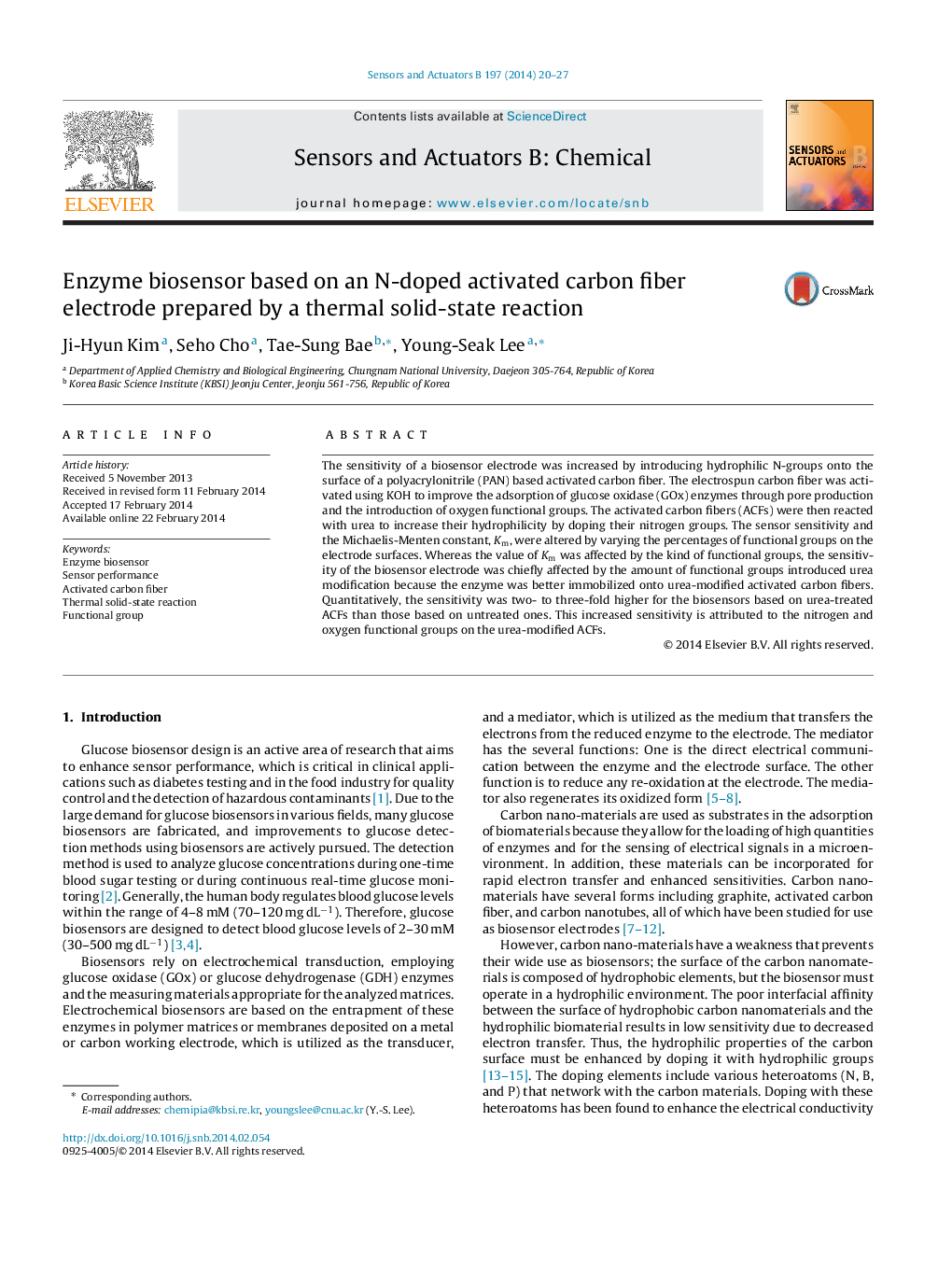| کد مقاله | کد نشریه | سال انتشار | مقاله انگلیسی | نسخه تمام متن |
|---|---|---|---|---|
| 742049 | 1462093 | 2014 | 8 صفحه PDF | دانلود رایگان |

• Nitrogen doping of activated carbon fibers (ACFs) by urea treatment could be enhanced the electrical conductivity and interaction with biomaterials.
• Hydrophilic and mesoporous carbon fibers were prepared through activation process using KOH as activation agent.
• Mesopore structures were more helpful for immobilization of enzymes than microporous carbon materials.
• The glucose sensitivity of the N-doped ACFs was higher than untreated ACF sample.
The sensitivity of a biosensor electrode was increased by introducing hydrophilic N-groups onto the surface of a polyacrylonitrile (PAN) based activated carbon fiber. The electrospun carbon fiber was activated using KOH to improve the adsorption of glucose oxidase (GOx) enzymes through pore production and the introduction of oxygen functional groups. The activated carbon fibers (ACFs) were then reacted with urea to increase their hydrophilicity by doping their nitrogen groups. The sensor sensitivity and the Michaelis-Menten constant, Km, were altered by varying the percentages of functional groups on the electrode surfaces. Whereas the value of Km was affected by the kind of functional groups, the sensitivity of the biosensor electrode was chiefly affected by the amount of functional groups introduced urea modification because the enzyme was better immobilized onto urea-modified activated carbon fibers. Quantitatively, the sensitivity was two- to three-fold higher for the biosensors based on urea-treated ACFs than those based on untreated ones. This increased sensitivity is attributed to the nitrogen and oxygen functional groups on the urea-modified ACFs.
The GOx can be stored in the slit pores of the carbon. Some residual GOx in the carbon slit pores can also be modified by the nitrogen and oxygen group effects, such as the grabbing effects due to semi-ionic interactions, to yield high-efficiency enzyme storage.Figure optionsDownload as PowerPoint slide
Journal: Sensors and Actuators B: Chemical - Volume 197, 5 July 2014, Pages 20–27